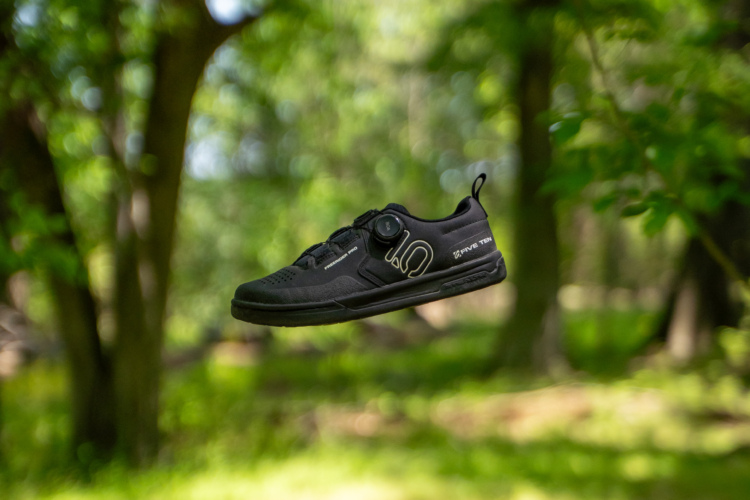
Lightweight gear gets me excited. As someone who studied engineering (but never really practiced it), I’m fascinated by the tradeoff between strength and weight that product designers face. Dial down the grams too low and durability or comfort will likely suffer; add extra strength and watch the weight balloon. Getting to a win-win in this game can be a lifelong quest.
Looking at the air mattresses from Klymit, it’s clear these folks are comfortable riding the line. But which side are they on? I decided to find out with the Inertia Ozone air mattress ($89.99 at Amazon).
Form and function

So you may have noticed there are holes in this air mattress. As best I can tell, the holes serve a couple of different purposes, the first of which is size and weight savings. Klymit says the Intertia Ozone packs down to the size of a soda can, and when mine arrived I can confirm it was indeed about the size of a 12oz can of Coke. Of course despite my best efforts I haven’t managed to deflate and roll it back up that tightly on my own. It does fit easily inside the included stuff sack, which is about the size of a 32oz Nalgene bottle.
The Inertia Ozone, with stuff sack, weighs 378.5g on my scale, which is about 10g lighter than a can of Coke for those keeping score at home. A patch kit is included in the stuff sack for repairs.
The air mattress is about 183cm/72in long and a little less than two inches thick when fully inflated. There’s an attached, inflatable pillow that adds to the overall length, and the pillow is about twice as thick as the main air chamber. Klymit says the mat can be inflated in seven to ten breaths, though I would say it takes at least double that. That’s still not a lot though, thanks again to the volume-reducing cutouts.



The valve on the main chamber is a little unusual, and I had a hard time using it initially. To inflate, remove the cap, flip the valve open, and blow. Once inflated, flip the valve closed and (this is the key) pop the cap back on. In my sleep-deprived state one night I just couldn’t get the cap to pop in place, and I figured it would be fine. Nope. Within no time the main chamber was completely deflated. The upshot is deflation is quick and easy when it’s time to pack up in the morning.
There’s a twist and pull valve on the pillow chamber that’s much easier to use. It appears previous versions of the mattress utilized the same twist-and-pull valve for both the main and pillow air chambers, which I think I would prefer.
On the ground

Onto the big question: Is this thing comfortable or what? For starters, I’m 6’3″ and I found the pad to be plenty long. Inflated, it doesn’t look particularly supportive — more like bubble wrap — but I found it to be incredibly comfortable, much better than the “self inflating” Therm-a-Rests of my youth. Fatter, more traditional air mattresses tend to feel bouncy whereas the Inertia Ozone does a much better job at conforming in a stable way. I can definitely feel my body contacting the ground in places, yet without any particularly painful pressure points.
I’m not a back, side, or stomach sleeper; I’m all three. In any given night I tend to start on my stomach, flip to my back, and then at some point end up on my side. The Klymit Inertia Ozone’s built-in pillow has a nice divot in the center that kept me pretty happy through the night on my back, and on also my side. I’m not sure about stomach sleeping with the Inertia Ozone; I was too tired to flop around as much as I usually do on my recent bikepacking adventure.
Perhaps just as important as comfort, air mattresses provide insulation from the cold ground. The Inertia Ozone can be used directly against the ground, or placed inside a sleeping bag. I used mine on the ground and the insulating value is readily apparent. Sleeping on the deflated mat one night I found out just how much warmth that extra inch or two of separation provides. The holes also prevent the mat from feeling too stuffy or sticky like more traditional pads.
In spite of my restless sleep positions, the Klymit Inertia Ozone proved to be a quiet sleeper. Another one of my campmates had a crinkly pad that zooshed every time he moved, so much so that I had a hard time falling asleep. The 75D polyester seems quite durable and held up in my tests on both sandy gravel and natural forest surfaces.
Bottom line
The Klymit Inertia Ozone may appear gimmicky, but I found it to be both practical and exceedingly comfortable. It’s not just great for bikepacking; it’s also my new choice for car camping.
Party laps
- Lightweight and very packable
- Not bouncy
- Includes air pillow
Pros and cons of the Klymit Inertia Ozone
Dirt naps
- Main inflation valve isn’t easy to operate
- Minimal amount of padding

















0 Comments